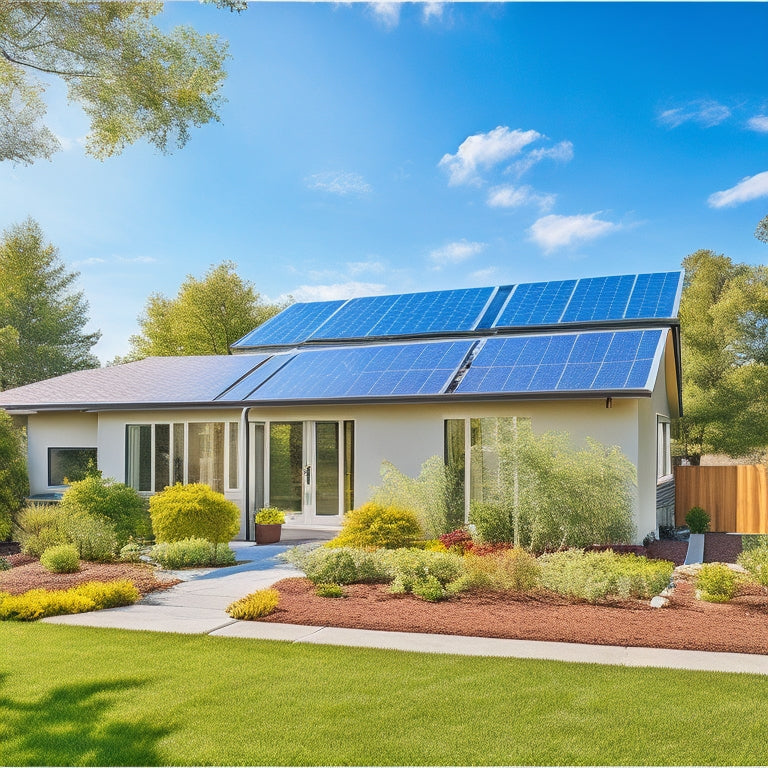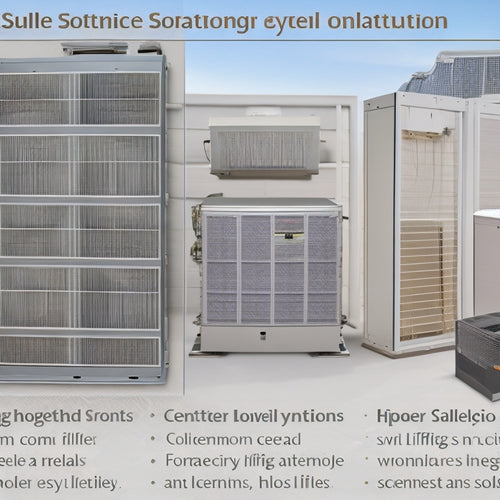
3 Tips: High-Performance Windows for Energy-Smart Home Upgrades
Share
When upgrading to energy-smart windows, you'll want to focus on three key factors: U-value ratings, Low-E glass, and frame materials, as these essential components work together to reduce heat transfer, energy consumption, and your home's carbon footprint. Aiming for a U-value between 0.20 and 0.30 will guarantee ideal thermal performance. Incorporating Low-E glass will minimize heat transfer and enhance temperature control. Finally, selecting the right frame material - such as fiberglass, vinyl, or thermally broken aluminum - will balance durability with thermal insulation. By considering these factors, you'll be well on your way to maximizing energy savings and achieving a more sustainable living space.
Key Takeaways
- Opt for windows with low U-values (0.20-0.30) for optimal energy efficiency and reduced heat transfer.
- Choose Low-E glass to minimize heat transfer, reduce energy consumption, and lower energy bills.
- Select frame materials like fiberglass, vinyl, or thermally broken aluminum for balanced durability and thermal insulation.
Understanding U-Value Ratings
Energy efficiency begins with a thorough understanding of U-value ratings, an essential metric for evaluating the thermal performance of windows.
You'll want to grasp the U-value significance, as it directly impacts your energy bills and carbon footprint. Measuring insulation, U-values represent the rate of heat transfer through a window. The lower the U-value, the better the window insulates.
For instance, a U-value of 0.30 indicates that the window allows 0.30 BTUs of heat to escape per hour, per square foot, per degree Fahrenheit.
When shopping for high-performance windows, look for U-values between 0.20 and 0.30 for peak energy efficiency.
Benefits of Low-E Glass
As you investigate high-performance windows for your energy-smart home upgrade, consider the significant benefits of incorporating low-E glass into your design.
Low-E glass reduces heat transfer, minimizing the flow of heat into your home during summer and out of your home during winter. This results in improved temperature control and energy efficiency, allowing you to enjoy a more comfortable living space while reducing your energy bills.
By reducing the amount of heat that escapes, you'll also minimize condensation and frost buildup on your windows.
In addition, integrating solar-powered solutions, such as solar-powered charging, can also enhance energy independence and reduce reliance on traditional power sources.
With low-E glass, you'll experience a more consistent indoor temperature, reduced energy consumption, and a smaller carbon footprint – all of which contribute to a more sustainable and energy-smart home.
Selecting the Right Frame Material
When it comes to high-performance windows, the frame material plays an essential role in determining the overall energy efficiency and durability of the system.
You'll want to choose a material that balances frame durability with thermal insulation to maximize energy savings. High-efficiency solar panels, like those used in solar-powered EV charging stations, demonstrate the importance of optimizing energy yield for enhanced performance.
Advanced charging algorithms can also be applied to window design to improve energy distribution.
Consider the following:
-
Fiberglass frames offer excellent thermal insulation and are resistant to warping or cracking.
-
Vinyl frames are durable, low-maintenance, and provide good thermal insulation, making them a popular choice.
-
Aluminum frames are strong, lightweight, and can be thermally broken for improved insulation, but may not be as durable as other options.
Frequently Asked Questions
Can I Install New Windows Myself to Save on Labor Costs?
"Measure twice, cut once" - wise words to heed when considering DIY installation of new windows to save on labor costs. You'll need specialized window tools and knowledge to avoid costly mistakes, so weigh your skills carefully before taking on this project.
Will New Windows Eliminate Condensation on My Windowsills?
You'll greatly reduce condensation on your windowsills with new, high-performance windows featuring advanced materials like low-E coatings, warm-edge spacers, and insulated frames, which minimize heat transfer and moisture buildup, ensuring a drier, healthier home.
Do Energy-Efficient Windows Qualify for Government Rebates?
You're maneuvering the rebate terrain like a pro, and yes, energy-efficient windows often qualify for government incentives, especially those featuring advanced energy saving technologies and sustainable window frame materials, such as fiberglass or recycled vinyl.
How Long Does It Take to Recoup Investment in New Windows?
You'll typically recoup your investment in 5-10 years, depending on window longevity and energy savings, which can range from $200 to $500 annually, giving you the freedom to enjoy your energy-smart home without breaking the bank.
Can I Replace Just One Window or Do I Need to Replace All?
You're torn between replacing one window or all - a solo upgrade might seem like a cost-effective solution, but it is crucial to weigh the benefits of replacing just one against the advantages of a full window replacement.
Related Posts
-

Why Solar HVAC Filters Revolutionize Home Energy Efficiency
By adopting solar HVAC filters, you're shifting your home's energy reliance from fossil fuels to clean, renewable sou...
-

3 Sun-Powered Automated Shades for Energy-Savvy Homes
You're looking to change your home into an energy-savvy haven, and sun-powered automated shades are an essential step...
-

10 Eco-Friendly Air Management Tools for Clean Home Living
You're taking an essential step towards creating a healthier living space by seeking eco-friendly air management tool...


